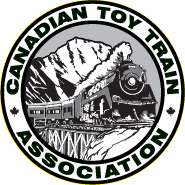China to Mongolia railway adventures
Train Travels – Shanghai to Beijing by High Speed and Trans Mongolian Railway by Slow Speed
By Frank L. Schmidt. December, 2019
A cruise to remember
A recent cruise my wife and I took out of Vancouver BC travelled across the North Pacific Ocean to Japan, South Korea and China. We disembarked the ship in Shanghai early in the morning, drove with taxi to the downtown area to our hotel for the night. We spent the rest of day touring the water city of Zheijaijaio, getting there by their modern and reasonably priced subway. Interesting place and worth a visit if you are visiting Shanghai.
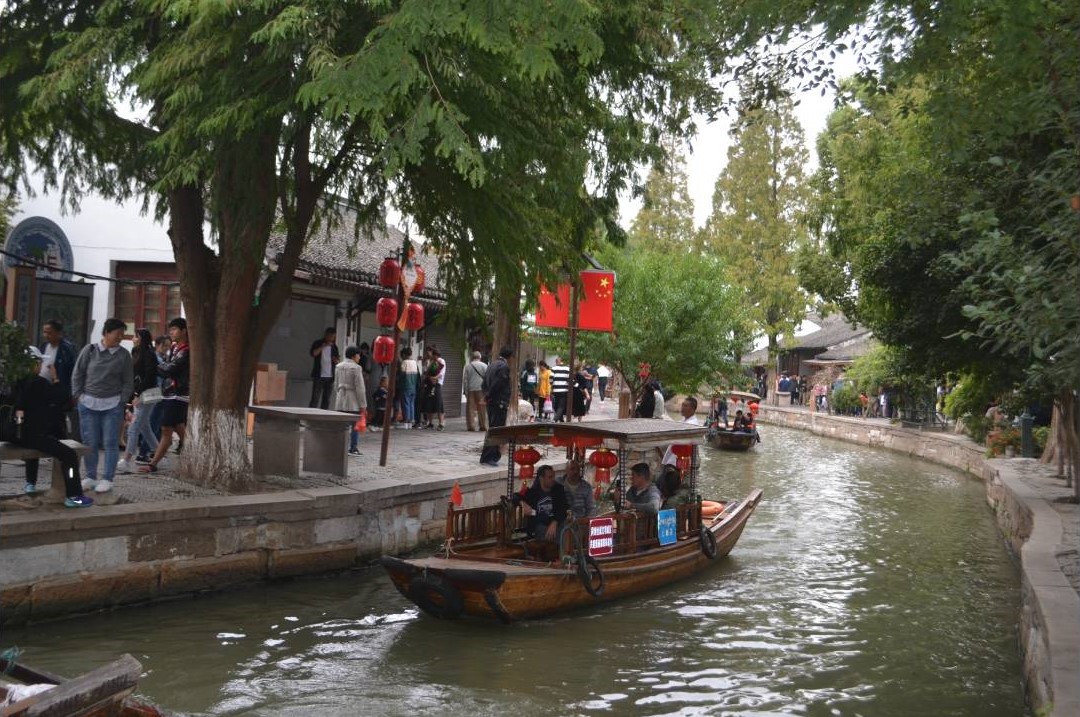
Water city of Zheijaijaio
Shanghai to Beijing – high speed!
The following day we boarded our high speed bullet train to Beijing. The Shanghai strain station was also reached via subway. We opted for the ‘moderate’ high-speed train journey (3 stops) at 5 ¼ hours instead of the express high-speed (nil stops) at 4 ½ hours travel time. Cost was the factor in our decision as the express cost is 1 ½ times that of the moderate express and we were not necessarily in a big hurry either.
The distance from Shanghai to Beijing is 1320 kms or 820 miles. IMAGINE travelling from downtown Vancouver to downtown Calgary AB in 4 hours, or to Edmonton in 5 hours by train, even shorter times if riding the non-stop express!
If you have taken a train journey before in China, then you are aware that this journey begins long before getting into your seat. The buying of the tickets is done via internet 1 – 2 months before departure, then picking up these tickets usually outside the station 24 hours before or on the day of, station security and finally the waiting area in these huge airport style train stations. Allow 2 -3 hours if you are unfamiliar with this procedure and less if this has been done before.
On this journey we opted for 2nd Class seating; 3 across, isle, then 2 seats together. We pre-booked this double seating together. The boarding is well advertised on the platform in English and Mandarin with the coaches plainly numbered to your ticket. The 1st Class offers 4 seats across and business is 3 across each comfortable with more leg room. The business also offers complimentary snacks and soft beverages.
On board each coach offered regular flash board and verbal announcements of up-coming stations, train speed and destination time. We regularly achieved our top speed of 309 kph, 206 mph on our trip. There were attendants traversing the aisle with food trolleys every 30 minutes or so selling snacks soft drinks and hot noodle foods. This train made 3 stops namely at Suzhou, Nanjing and Taian where passengers got off / on or went out for a short smoke break.
Of interest, this rail corridor was double tracked and is almost 95% totally elevated for the entire journey, touching land only through tunnels and for a couple of miles at each end of the terminus rail stations. The amount of concrete required is almost beyond comprehension to someone from the west, no wonder China currently leads the world in cement usage.
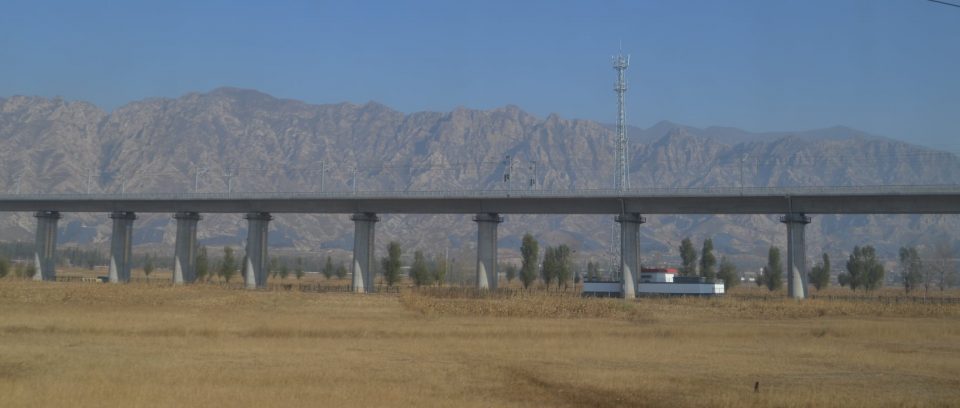
Trans-Mongolian-Railway – a slower pace
We arrived in Beijing on time and made our way to a local hotel for a few days sightseeing before continuing our rail journey on the slower speed “Trans-Mongolian-Railway” or (TMR).

Beijing Railway Station
The TMR connects the capital cites of Russia, Mongolia and China and we opted to get off in Ulaanbaatar (UB as locals call it) the capital of Mongolia to experience the distinct culture and landscape of the country. The TMR is part of the Trans-Siberian Express train which itself veers off in Russia to Vladivostok taking 8 days to complete this particular leg. The entire train travel of Beijing to Moscow takes approximately 5 full days to cover the 4735 miles (7620 kilometer) route though ours to UB was only 31 hours. On board, we had a private 2 person roomette with 2 bunk beds, lounge chair, table and western bathroom with shower.
Departing Beijing
We departed Beijing Main rail station in the morning passing the urban sprawl, many tunnels through mountains, landscapes of canyons and high rocks before reaching the low rolling farming countryside. A glimpse of The Great Wall, standing and in a deteriorated condition could be seen through the large window as we travelled along at the slower pace of 60 – 100 kph.
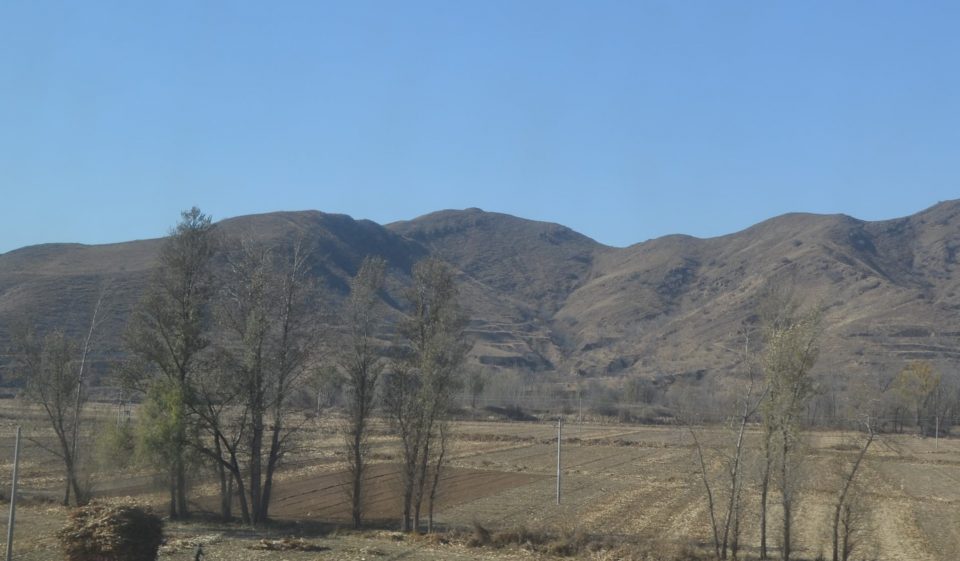
Truck swap for gauge change
After dinner and just before reaching the Chinese – Mongolian border, the train wheels (complete trucks) are changed out on each coach to fit the slightly larger Mongolian and Russian track gauge. The Chinese track is the standard of 4ft 8.5 inch while the Mongolian is 5ft 0 inch. A fascinating process lasting 2.5 – 3 hours was needed to change the trucks on the 17 coaches all the while, passengers remained on board each coach. This switching occurs at the Chinese city of Erlian.
First, the locomotive is removed to allow the coaches to be pushed into the covered building housing the necessary equipment. There are 5 lanes of double track of standard and Mongolian track widths. Each of our 17 coach train is then pushed inside on one of these lanes to a specific jacking location, positioned, uncoupled and then pulled back with the next in line to the jack location, 4 coaches per lane. Once a coach is in the correct jacking spot, 4 automatic jacks swing 90 degree to engage the coach, 2 at the front and 2 at the rear between the trucks. A central control panel begins to activate all jacks at the same time lifting the coach up about 18 inches free of their truck connecting pin.

Passenger coach truck swap
The Chinese crews do this one coach at a time, and when the entire lane is lifted, a cable pulls the 8 trucks away to the Chinese end of the building. Another cable is then used to bring in the 5 ft trucks from the Mongolian end, stopping to deposit 2 under each coach in the correct position. Sometimes, these trucks need to be moved with the traditional manual pusher a slight distance for positioning, and when both the front and rear trucks are positioned, the supervisor then gives the signal to lower the coach body onto the wider ones, catching the truck pin in the body attachment. In the meantime, other workers are positioning the remaining trucks under the appropriate coaches in the lane. Once one lane is completed, another lane is started. Workers stoop under the elevated coach body doing routine inspections and any other body maintenance required. One coach need a new coupler and this was ongoing while other crew members performed the lifting / lowering on the other coaches for the truck replacements.
Finally, after all the trucks are changed to the wide gauge in the 5 lanes and a locomotive from the Mongolian end enters and starts to make up the train by attaching all coaches in lane 1, pulling them out then backing into lane 2 attaching all, pulling out to begin again in lanes 3, 4 and 5. All coaches are connected and off we go again. Not necessarily a speed record but then this was not a high speed train. This process is repeated in reverse with all trains coming from Moscow to Beijing too, passenger as well as freight. Prior to our coach entering the truck changing shed, out coach attendant informed every berth not to use the washroom facilities until we had departed the truck transit shed.
On to Mongolia on the TMR
Life on board the train was relaxing and enjoyable watching the changing scenery unfold. Farming and coal mining seemed to be the two main activities observed.
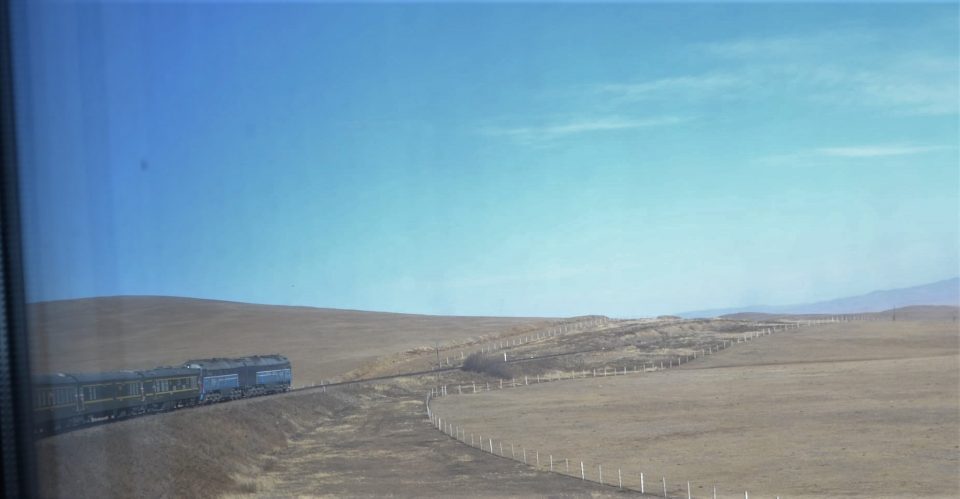
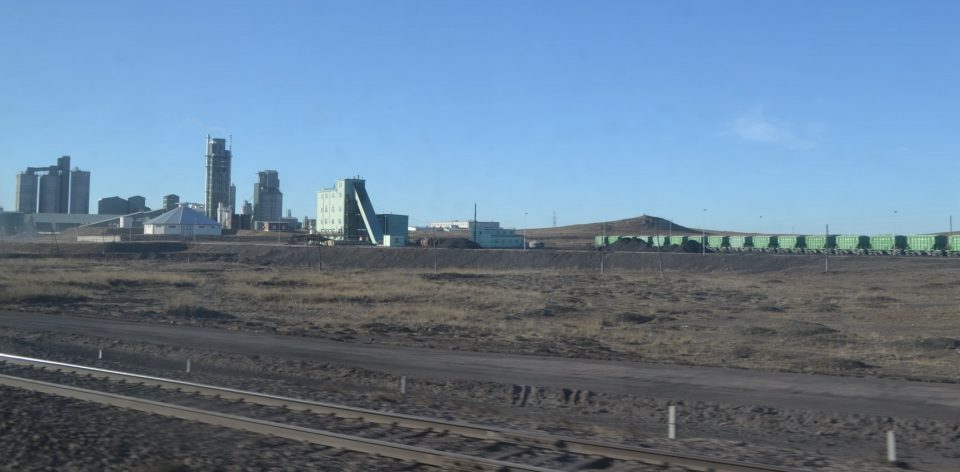
We arrived in UB, Mongolia’s capital, in time to explore the city. We had arranged an independent tour with a local travel company which provided a car driver and English speaking guide for our stay. A trip to the old Genghis Khaan era capital city of Kharakhorum with a visit to the national museum and large Buddhist temple were done on the first day.
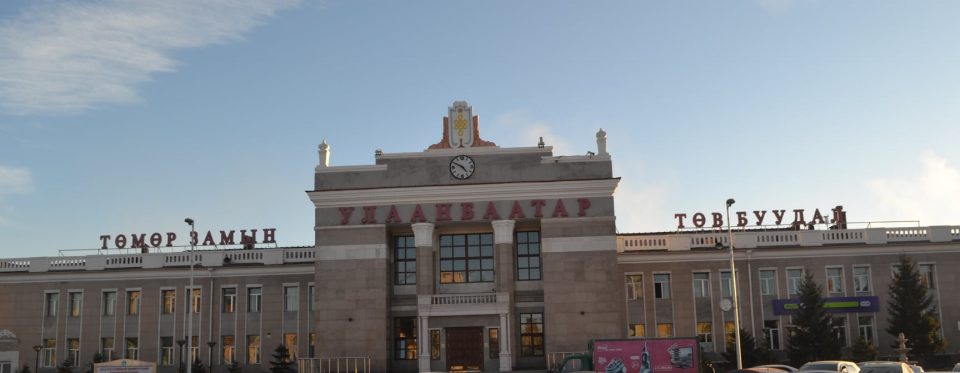
Seeing the life of the Locals
On our second day, a visit to a local farm complete with Ger (Mongolian unique nomad house), sheep, goats and camels along with a camel ride on a Bactrian (the 2 hump variety) was done. An interesting visit.
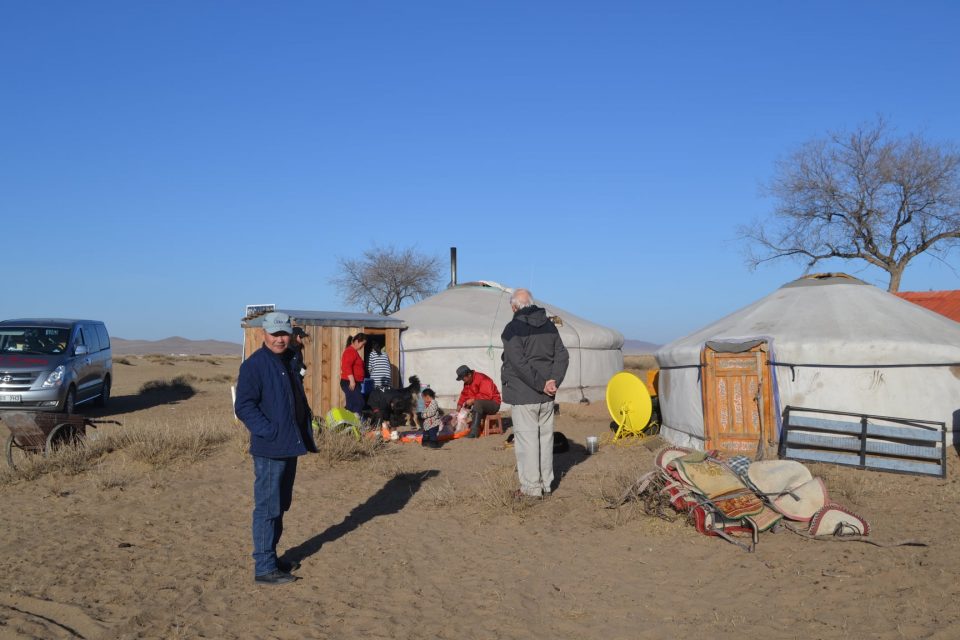
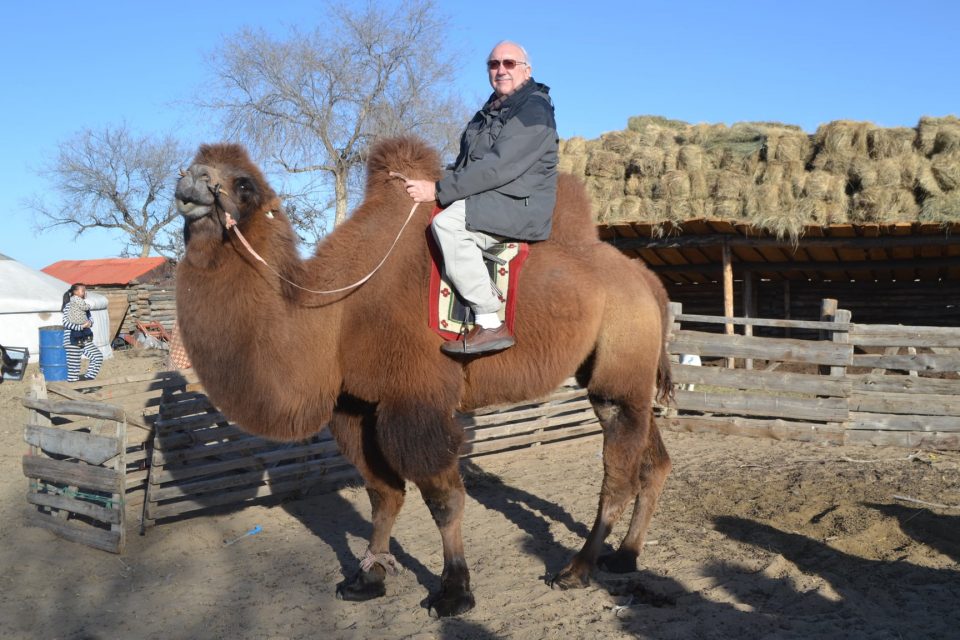
Seasonal migration for farmers
The nomadic Mongolian livestock farmers were in the process of moving their household camps for the approaching winter season. They normally move four times seasonally to have the best grazing for their animals. Large herds of sheep, goats and horses were seen along with the proverbially heavily laden truck carrying all household possessions with the satellite dish on top to the new camp location.
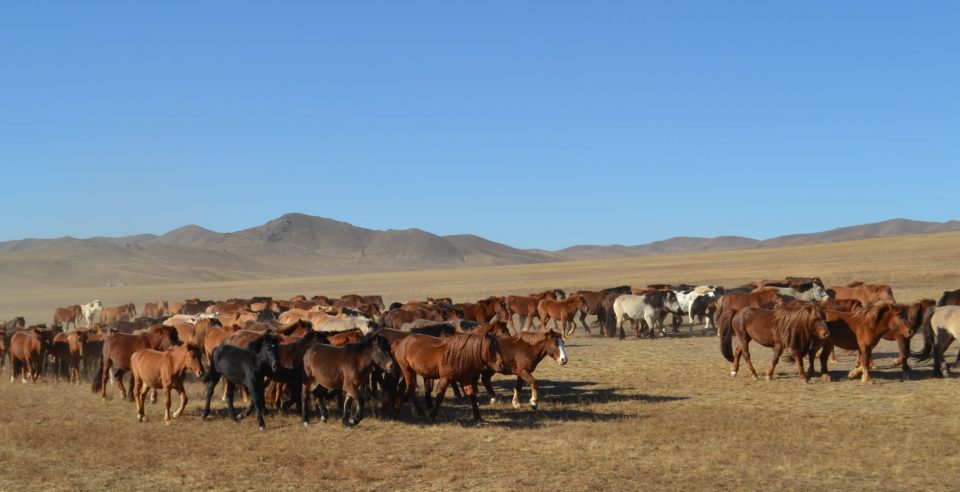
They embrace their nomadic lifestyle of living in the Ger, up at dawn and sleep at dark but today their children are going away to school for a better education and possibly not returning to this hard life.
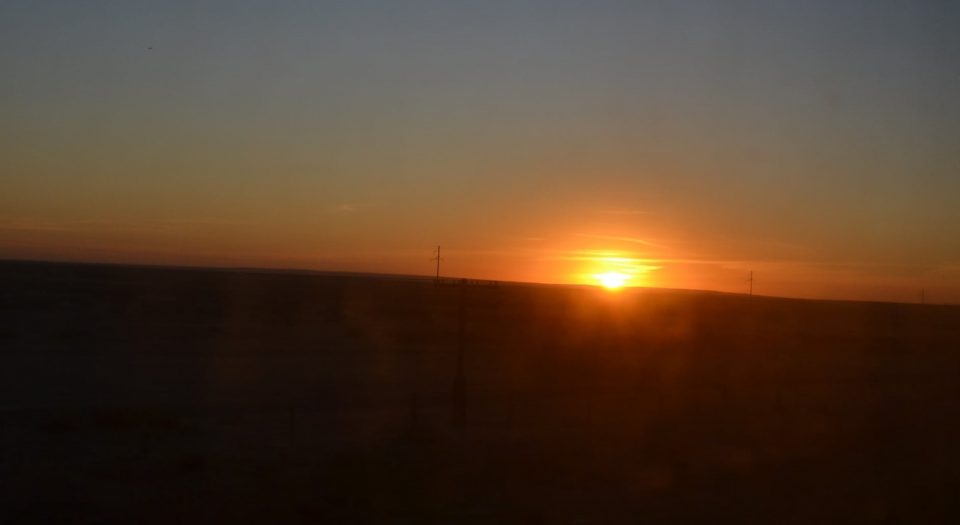
Mongolian sunset
In Closing
My wife Annie and I thoroughly enjoyed our adventure, and seeing the vast landscapes of China and Mongolia by train was one of our longest rail adventures yet. We saw local culture, ate local foods and were awed by the magnificent architecture of the cities and railway stations everywhere we went.
We hope you enjoyed our journey! We look forward to the days ahead when we can travel openly again and enjoy the relaxing comfort of seeing parts of the world from the train.
About the Author
Frank Schmidt is a collector of American Flyer, Hornby, Marklin, some Marx, and Bing O gauge trains. And Meccano sets! He belongs to the CTTA, TCA and TCS train clubs and has published train articles in each of their periodicals.
He has recently co-authored a book “Canadian Pre-War Toy Trains – The Marketplace – 1912 -1938” with fellow enthusiast Charles Reif.
Frank says, “In our world travels, adventure holidays as we call them, we use public trains when possible to see the landscape instead of flying over it. These include riding the rails in Canada, China, India, Mongolia, Myanmar, USA, Egypt, Zimbabwe, South Africa and most of Europe. The interesting points are always the conversations with other travellers, and being aware of the different customs and cultures.”
“A recommendation before starting out is to always book ahead, reserve your seat at a small extra cost and use reference information on ‘The man in seat 61’ at www.seat61.com‘ to help plan your trips.”
